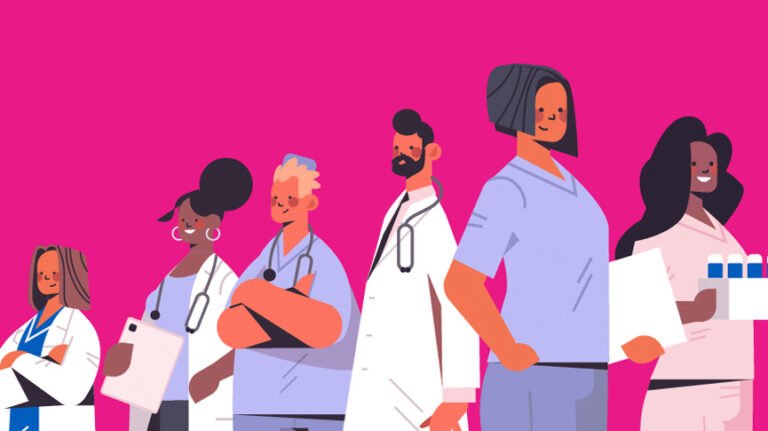Women are not only heard less in the workplace and to leadership rolesbut also by the people we are supposed to trust the most – medical providers.
From ovarian cysts being dismissed as normal “period pain” to autoimmune disorders being misdiagnosed as depression, a number of women’s health issues are commonly misdiagnosed by doctors or simply dismissed as a figment of their imagination.
This inequality can have far-reaching, significant, and even deadly consequences. in a study published by Academic Emergency Medicine, Women who visited the ER reporting severe stomach pain had to wait, on average, nearly a third of the time longer than men who went to complain of the same symptoms.
So why does this type of gaslighting still happen in the age of modern medicine and what can we do about it?
Women with pain may be treated less seriously than men
In the past, doctors used to diagnose women who came to their office with all types of physical and mental ailments with “hysteria”, and prescribe pills (often with a sedative effect) to calm them down.
It’s not much different today. Women who tell their doctors they are in pain are much more likely than men who complain of the same symptoms to receive prescriptions for sedativesand no painkillers.
In a studywomen who had undergone coronary artery bypass surgery were only 50% more likely to be prescribed painkillers, compared to men who had undergone the exact same medical procedure. In the ER in the United States, men wait an average of only 49 minutes before receiving an analgesic for acute abdominal pain, while women wait an average 65 minutes.
Some more disturbing statistics recently published on Washington Post explain the difference between how women’s and men’s pain is treated and its consequences:
- The Journal of the American Heart Association reported that women who visited emergency departments in 2022 with chest pain had to wait 29% longer on average than men to be screened for possible heart attacks.
- In an analysis of 981 emergency room visits, women who had acute abdominal pain were up to 25% less likely than men with the same symptoms to be prescribed strong opioid painkillers.
- Middle-aged women who told their doctors they had symptoms of heart disease such as chest pain were twice as likely to be diagnosed with a mental illness, compared to men with the same symptoms
We understand women’s physiology less than men
Part of the reason for these gender disparities and biases in the medical system is this the medical community has done less research geared toward women’s pain and physiology. The medical meanings of most diseases are contingent about how we understand male physiology and the studies that are done are usually geared towards male subjects. This can have devastating, even fatal consequences.
For example, the New England Journal of Medicine published a study in 2000 finding that women are seven times more likely than men to be misdiagnosed and discharged while he does have a heart attack. 70% of people with chronic pain are women, but 80% of pain studies are conducted in human males or male mice.
In one of the few studies specifically looking at how gender can affect how we experience pain, women were found to experience more pain more often and at higher levels of intensity than men. Although the researchers were unable to pinpoint the exact reasons behind this discrepancy, it is likely that hormones and biology play an important role.
It happens more often than you think – even to female doctors
Here’s more good news for women: Even female doctors and health professionals are not immune to this discrepancy.
A recent one Washington Post article highlights the experiences of Ilene Ruhoy, a 53-year-old female neurologist in the Seattle area. Ruhoi was experiencing repeated ringing in her ears and headaches. Even though she had a medical degree and specialized in the study of how the brain works, she had a hard time convincing doctors to order a brain scan.
Waiting wasted precious time, and when they finally looked into it, a tumor the size of a tennis ball had formed on her brain and was pressing on it. Ruhoi survived the surgery that followed, but the tumor had grown too large to be completely removed, so she must now undergo radiation treatment for the smaller tumors that formed. Had it been taken seriously and evaluated early, the smaller tumors may not have had time to form.
We have a long history in the West of denying women’s pain and stereotyping women as more prone to being “hysterical”. Even in today’s age of modern medicine, ieWomen are more likely to have their complaints wrong diagnosis as psychological disorders or – as Ruhoy’s case shows – dismissed as “stress”.
Coupled with the knowledge gap (women were excluded from the majority of clinical research until the early 1990s), doctors today continue to have less information and general understanding of women’s symptoms, bodies, and common ailments.
